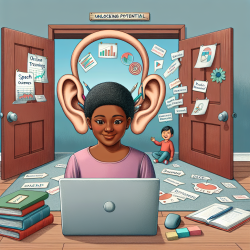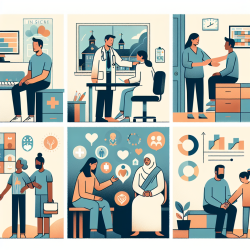The importance of a well-trained workforce in hearing care cannot be overstated. A recent study published in the Bulletin of the World Health Organization, titled "Training for Hearing Care Providers," sheds light on the critical need for specialized training to address the global gap in ear and hearing care services. This gap is particularly pronounced in low- and middle-income countries, where resources and trained professionals are often scarce.As a practitioner, integrating the findings from this study into your practice can significantly improve outcomes for children and adults alike. Here’s how you can leverage the research to enhance your skills and provide better care:
Key Findings and Recommendations
1. Importance of Task-Sharing
The study emphasizes the role of task-sharing, where tasks are redistributed among health workers with varying levels of training. This approach can be particularly effective in resource-limited settings. For example, community health workers can be trained to perform basic hearing screenings, freeing up specialists to focus on more complex cases.
2. Comprehensive Training Programs
The research highlights the need for comprehensive training programs that include both theoretical knowledge and practical skills. The World Health Organization’s Primary Ear and Hearing Care Training Resource is an excellent example. These manuals cover essential skills such as otoscopy, ear syringing, and hearing assessments for both babies and adults.
3. Use of Technology
Automated devices and mobile applications can simplify hearing screening protocols. Studies from India and Nigeria have shown that community health workers can effectively use these technologies after brief training periods. Incorporating such tools into your practice can streamline processes and improve accuracy.
4. Local and International Collaboration
In areas where local expertise is lacking, collaboration with international experts can be invaluable. This can be facilitated through remote education and supervision, or by forming partnerships with institutions in other countries. Such collaborations can help bridge the training gap and ensure that practitioners are well-equipped to handle a variety of cases.
Implementing These Findings in Your Practice
To make the most of these insights, consider the following steps:
- Assess Your Current Skills: Identify areas where you might benefit from additional training or resources.
- Engage in Continuous Learning: Participate in workshops, online courses, and other training programs to stay updated on the latest techniques and technologies.
- Leverage Technology: Incorporate automated devices and mobile applications into your practice to enhance efficiency and accuracy.
- Collaborate: Seek opportunities for collaboration with local and international experts to expand your knowledge and skills.
- Advocate for Resources: Work with your organization to ensure that adequate resources are allocated for training and development.
By taking these steps, you can not only improve your own skills but also contribute to better outcomes for your patients. The importance of a well-trained workforce in hearing care cannot be overstated, and as practitioners, we have a responsibility to continually seek ways to enhance our capabilities.
Conclusion
Training and development are crucial for addressing the significant human resource gap in ear and hearing health. The existing literature underscores the potential for these strategies but also highlights the need for more comprehensive studies on training outcomes. By focusing on continuous learning, leveraging technology, and fostering collaborations, we can ensure that we are well-equipped to provide the best possible care for our patients.To read the original research paper, please follow this link:
Training for hearing care providers.










